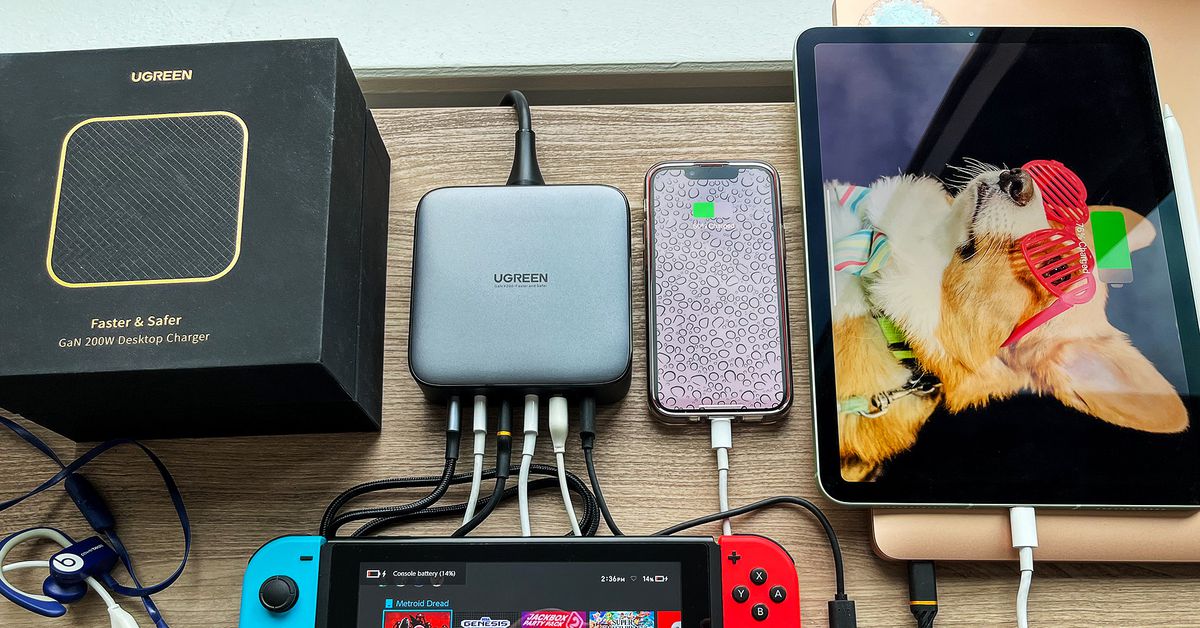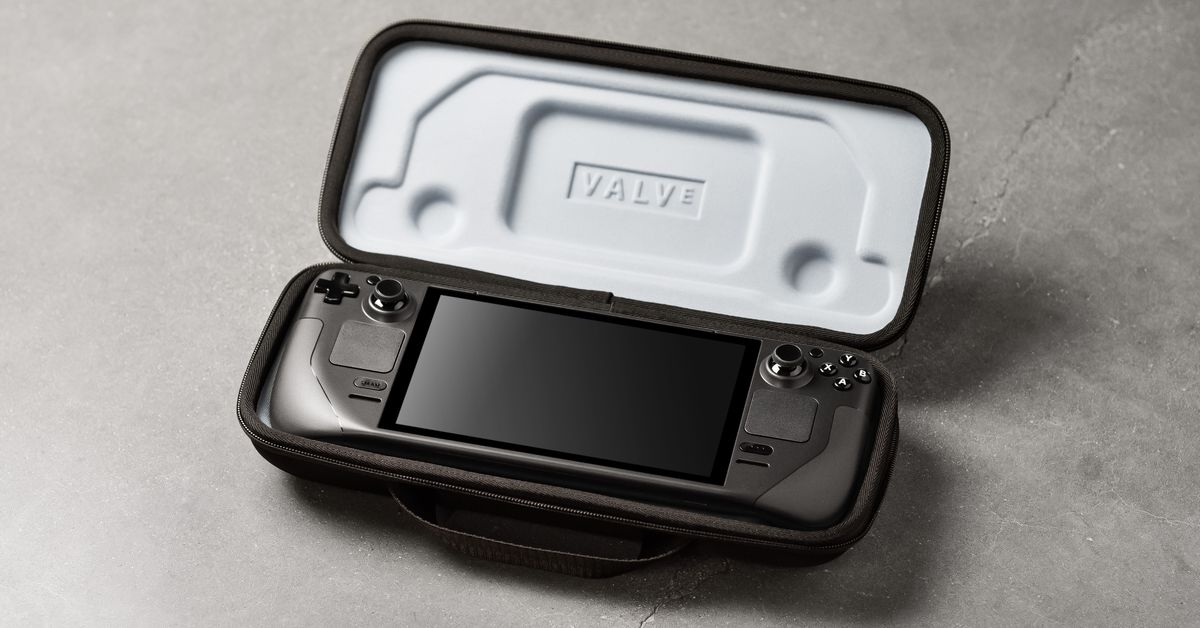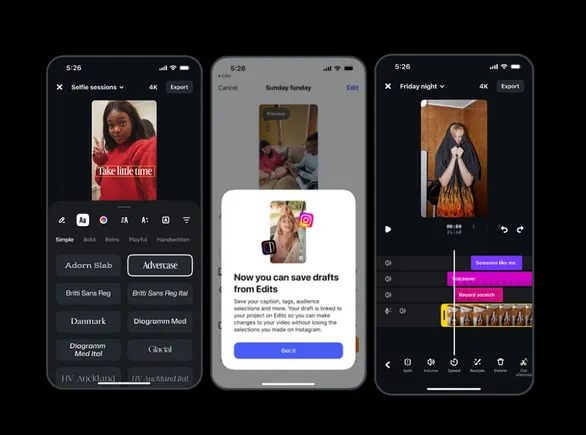This 200W charging station provides one-stop top-ups for all your gadgets
Ugreen Nexode is a capable and fiddly charger at a high price Continue reading…

Power adapters have been getting smaller over the years thanks to gallium nitride (GaN) semiconductor technology, but Ugreen’s $179.99 Nexode 200W charger is using the tech for big power. This hefty four-by-four-inch square brick can be placed on your desk and could power three, maybe even four, laptops simultaneously — or power a combination of up to six mobile devices.
If you’re like me, you are a part of the remote workforce and were given a work laptop, but you also like to use your personal laptop at the same time. My desk has two MacBook Airs, a docking station, headphones, a Bluetooth speaker, a game controller, and an iPhone MagSafe stand, each requiring its own power brick and leaving a messy workspace. The Nexode replaced all of those with a single brick and two-meter power cable.
:no_upscale()/cdn.vox-cdn.com/uploads/chorus_asset/file/23449373/ushakir_220109_5204_0004.jpg) The Nexode 200W is best for stationary desk use, but I did set up this power station in my hotel room on a trip.
The Nexode 200W is best for stationary desk use, but I did set up this power station in my hotel room on a trip.
Ugreen’s high-powered charger isn’t cheap. For its $180 price, you can get multiple 100W USB-C chargers. But it could be worth it if you are considering buying extra power adapters that stay at your desk so that you can keep the originals in your travel bag. The Ugreen doesn’t feel cheap, either: its plastic body is very solid and the charger comes with a one-meter braided USB-C cable that supports 100W charging. It doesn’t come with a cute vertical desktop stand like Satechi’s 165W charger, but it does have four grippy rubber feet to keep it in place — not to mention that it has two more ports than the Satechi.
But, for that price, it better actually be capable of charging 200W worth of electronics. After some testing, I found that to be largely true, but charging could slow down or straight up stop if you’re not paying attention to the connections and capabilities of the four USB-C Power Delivery ports and the two USB-A ports. The ports aren’t labeled with their capabilities like Anker’s 120W charger, so you might want to keep a cheat sheet on hand or you might end up playing plug roulette.
There’s an overwhelmingly complicated chart provided by Ugreen explaining all the possible power scenarios, which you can see below. Though the Nexode has a 200W max capacity, the most any single port can output is 100W — this doesn’t support the newer USB-C Release 2.1 spec.
While testing, I was interested in knowing two things: how does this handle six devices at once and how can I max this thing out at 200W? For a six-device configuration, the USB-C ports from port one through four can take 65W / 45W / 45W / 20W, respectively, and the USB-A ports share 20W of power for a total of 195W.
:no_upscale()/cdn.vox-cdn.com/uploads/chorus_asset/file/23521462/image0.png) The power distribution for the Ugreen Nexode 200W is very complex, so you might want to keep this cheat sheet on hand.Image: Ugreen
The power distribution for the Ugreen Nexode 200W is very complex, so you might want to keep this cheat sheet on hand.Image: Ugreen
I plugged three MacBooks (two M1 Airs and one 12-inch MacBook from 2016) and an iPad Air 4 into the USB-C ports and two iPhones into the USB-A ports and noted that the three MacBooks reported 65W, 45W, and 45W with macOS’ built-in power reporting. For the iOS devices, I used the free ChargerMaster app, and it reported that the iPad Air 4 in port four was charging at 15.37W while the battery was at 20 percent SoC — close enough to the 20W headroom that the port is capable of. The first USB-A port had an iPhone 13 Mini charging at a slow 4.61W, but it was already 79 percent charged at the time, so I didn’t expect it to operate faster. Finally, the last USB-A port had a first-gen iPhone SE plugged in at 20 percent charge and charged at 5.98W. This brings our total to 181W (rounded), which is not far off from the 195W max the chart claims.
So, how do we get to 200W? The chart claims that Ugreen’s charger can provide 100W from both USB-C ports one and two, and I was able to confirm this. I plugged in a 14-inch MacBook Pro and an MSI GS77 Stealth gaming laptop (which supports PD charging despite the 240W charge brick it comes with) and got a 100W reading from the MacBook. And if you’re more into charging two MacBooks at 100W, I also confirmed 100W charger readings from each of the two plugged-in MacBooks.
Though you can pull up to 100W from each of the first two ports, if you want to plug anything else in, like your smartphone, it’s going to drop the charge rate of both of the laptops. Even if you only needed one 100W laptop, you can only plug one more device in and sustain that speed — any third device, regardless of draw, will drop both 100W devices down to 65W.
The limitations on how the ports distribute power make the Ugreen Nexode not the ideal travel charger. If you’re carrying a high-end laptop, let’s say a 2019 16-inch MacBook Pro, the 18.4-ounce Nexode is about 74 percent heavier than the 10.6-ounce Apple 96W power adapter. Apple’s new GaN-based 140W charger is even lighter at 8.01 ounces. The Ugreen’s power cable is the three-prong grounded kind, which removes some travel charging prospects in case you need to plug in somewhere that is not grounded.
:no_upscale()/cdn.vox-cdn.com/uploads/chorus_asset/file/23449374/ushakir_220109_5204_0005.jpg) Nintendo Switch TV mode can be accomplished — but not easily.
Nintendo Switch TV mode can be accomplished — but not easily.
Still, I went on a trip with this charger and was able to plug all my stuff in at the same time when I arrived at my hotel: my MacBook Air, Nintendo Switch, Apple Watch (USB-C), a 10,000mAh power brick, and two iPhones. With the full load, the notoriously fickle Switch started flashing on and off until I reseated it. When I swapped the Switch for an official MagSafe charger, another device stopped charging. This finicky behavior happened enough times for me to take notice, but once I reseated the confused ports, the Ugreen started behaving normally.
I found a way to use my Switch in dock mode, too, but only with an aftermarket HDMI hub and not the official dock. The Nintendo Switch is notorious for weird power draws (the dock wants 15V 2.6A for TV mode), but Ugreen’s USB-C ports have rails for 15V 3.0A. If you wanted to stream your Switch from your computer desk and had hoped that Ugreen would save you an AC port, then you’ll be disappointed.
Ugreen advertises that the Nexode’s GaN and SiC chips improve heat dissipation, and I believe it. I charged two 100W-capable laptops and also charged a full six-device load, and it was never more than just warm to the touch. Apple’s 96W non-GaN charger, in comparison, feels very hot to the touch while charging only a single laptop.
The Ugreen Nexode 200W charger appeal isn’t for replacing your high-end laptop’s power supply; it’s to share lots of power to more devices at the same time without additional bricks. It works best as a central desktop charger (as advertised). It could also be good for a small business that uses floater iPads or other mobile devices and could use a charging station.
The size and heft make it less than ideal for traveling, and its confusing power output chart isn’t very fun to troubleshoot when you are on the road. Perhaps Ugreen could add labels to the ports to help simplify this in the next version.
Despite its price and size, the Ugreen Nexode is one of the first USB-C chargers to hit the 200W mark, and hopefully we’ll see more on the market in the near future.
Photography by Umar Shakir / The Verge

 Lynk
Lynk 































